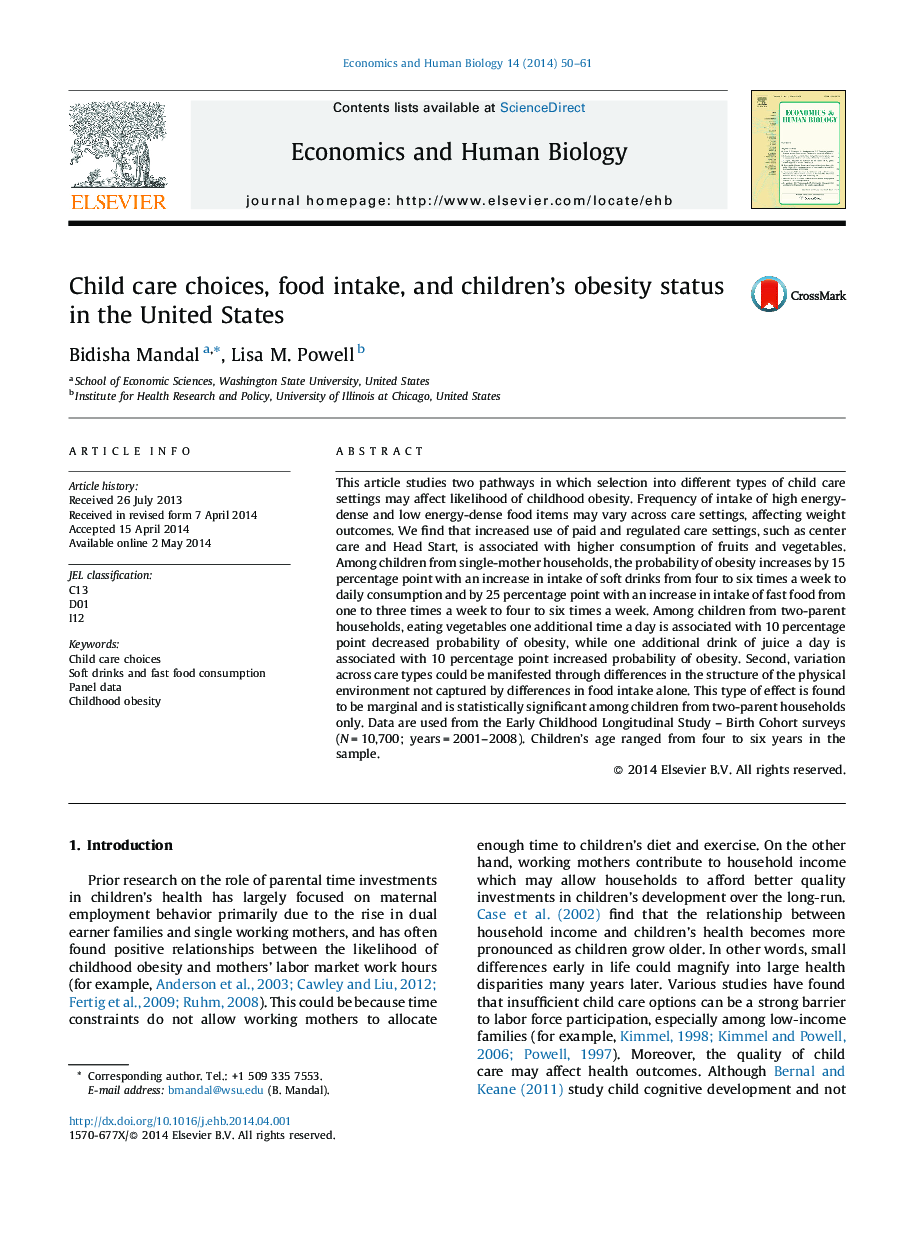| کد مقاله | کد نشریه | سال انتشار | مقاله انگلیسی | نسخه تمام متن |
|---|---|---|---|---|
| 5057009 | 1476565 | 2014 | 12 صفحه PDF | دانلود رایگان |
- Differences in food intake are associated with variations in child care use.
- Higher intake of low-energy dense food is observed in Head Start.
- Higher intake of high-energy dense food is observed in relative care settings.
- High-energy dense food intake is related to obesity in young children in the U.S.
This article studies two pathways in which selection into different types of child care settings may affect likelihood of childhood obesity. Frequency of intake of high energy-dense and low energy-dense food items may vary across care settings, affecting weight outcomes. We find that increased use of paid and regulated care settings, such as center care and Head Start, is associated with higher consumption of fruits and vegetables. Among children from single-mother households, the probability of obesity increases by 15 percentage point with an increase in intake of soft drinks from four to six times a week to daily consumption and by 25 percentage point with an increase in intake of fast food from one to three times a week to four to six times a week. Among children from two-parent households, eating vegetables one additional time a day is associated with 10 percentage point decreased probability of obesity, while one additional drink of juice a day is associated with 10 percentage point increased probability of obesity. Second, variation across care types could be manifested through differences in the structure of the physical environment not captured by differences in food intake alone. This type of effect is found to be marginal and is statistically significant among children from two-parent households only. Data are used from the Early Childhood Longitudinal Study - Birth Cohort surveys (N = 10,700; years = 2001-2008). Children's age ranged from four to six years in the sample.
Journal: Economics & Human Biology - Volume 14, July 2014, Pages 50-61
